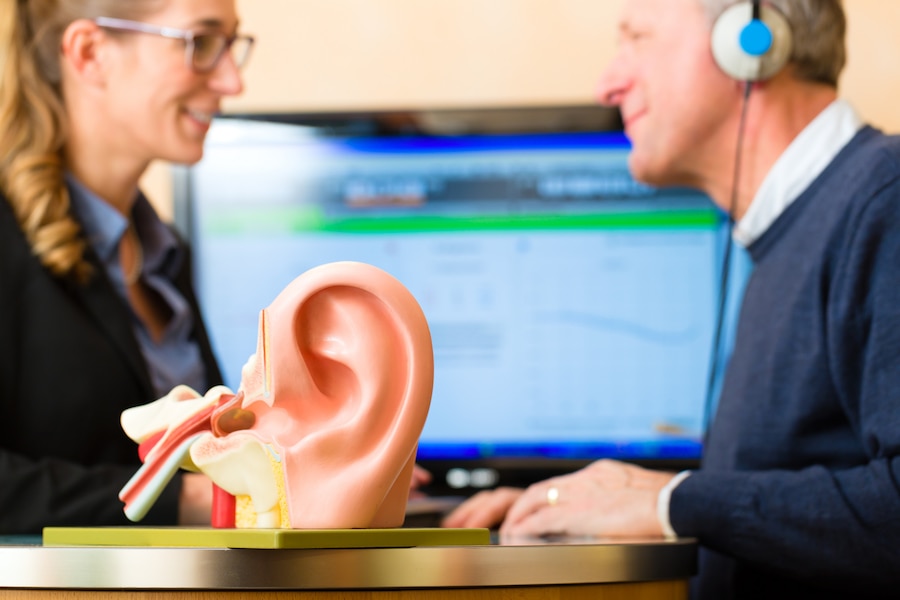Accessibility in the Digital Age for Deaf Individuals: Consider 6 Facts - 5 minutes read
In our digital age, accessing the same services and information that hearing individuals can benefit from is essential for Deaf individuals. Accessibility has become an increasingly important issue as most digital services are designed with only the hearing population in mind, excluding people who have any disability, like deafness or physical impairment. What options do they have? In this blog post, we'll explore the range of technologies available today and discuss how access to technology empowers Deaf individuals and increases their overall quality of life with 6 tips. So, let's dive into it!
1. The importance of access to digital content for Deaf and Hard of Hearing individuals.
Access to digital content is crucial for everyone, including Deaf and Hard of Hearing individuals. In a world that is becoming increasingly digital, barriers to accessing information can significantly affect the quality of life and opportunities available to those with hearing loss. Providing equal access to important digital content, such as news articles, online videos, and educational materials, is essential for ensuring that all individuals can participate fully in society.
With the help of technological advancements and updated laws, Deaf and hard of Hearing individuals now enjoy improved access to digital content. Content creators and service providers must guarantee the accessibility of their digital content, while individuals should assert their right to equal access.
2. Advances in technology make it easier for Deaf individuals to interact with the world.
In recent years, technology has made remarkable progress in facilitating communication for the Deaf community. Smartphones and tablets have revolutionised communication by introducing novel tools such as video calls, messaging apps, and transcription services. These innovative solutions have played a pivotal role in bridging the communication gap between individuals who must be versed in sign language. Additionally, voice-to-text software has significantly improved, allowing Deaf individuals to participate in discussions and meetings more efficiently. You can enrol on any online course. For example- get BSL levels 1 and 2 online at your own pace and schedule.
Assistive technology like hearing aids and cochlear implants have also become more sophisticated, providing more precise sound and better functionality. These advances are crucial in improving accessibility and empowering the Deaf community to connect with the world around them.

3. Closed captioning and subtitles on streaming services.
In the age of streaming, access to entertainment has always been challenging. However, for those who are deaf or hard of hearing, the experience can be hindered by the lack of closed captioning or subtitles. Fortunately, many streaming services, such as Netflix and Amazon Prime Video, have made efforts to provide these accessibility features. Close captioning and subtitles benefit those with hearing impairments and provide a more inclusive experience for non-native speakers and those who prefer to watch without sound. It's a simple addition that can significantly impact the viewing experience for everyone.
4. Apps that provide sign language translations.
Daily communication can be difficult for individuals who have hearing impairments. But thanks to modern technology, there are apps available that can provide sign language translations in real-time. These apps use artificial intelligence to analyse spoken language and translate it into sign language so that users can converse with those who use sign language to communicate. With these apps, individuals who are deaf or hard of hearing can easily participate in meetings, chat with friends, and even order food at a restaurant. The possibilities are endless, and the effect is enormous, as these apps make communication inclusive and accessible for everyone.
5. Make websites more accessible for Deaf individuals through design, navigation, content, and more.
Making websites accessible for Deaf individuals requires careful consideration of design, navigation, content, and more. One of the most critical aspects of designing a website accessible for Deaf individuals is providing alternatives to auditory content, such as closed captions and transcripts. Another crucial factor is designing a user-friendly interface that is easy to navigate without relying on auditory cues. This can include visual cues, simple language, and intuitive organisation. Additionally, incorporating sign language videos and other forms of visual content can significantly enhance the accessibility of your website for Deaf visitors.
By investing time and effort into making your website more accessible for Deaf individuals, you can create a more inclusive experience and better serve this critical community.
6. Strategies for businesses to improve their services and products for Deaf customers
Businesses often overlook the unique needs and preferences of Deaf customers when it comes to improving their services and products. However, implementing strategies to accommodate this community can significantly benefit the business and the customer. One effective method is to offer accessible communication, such as providing British Sign Language (BSL) interpreters or having employees trained in basic BSL.
Additionally, offering visual aids and resources, such as captioning and written materials, can significantly enhance the customer experience. It's also essential for businesses to actively seek feedback from Deaf customers and incorporate their suggestions into future improvements.
By prioritising the needs of Deaf customers, companies can not only improve their services but also foster a more inclusive and diverse environment for all customers.

Conclusion
The importance of digital content for deaf and hard-of-hearing individuals cannot be overstated. Technology has enabled them to interact with the world in ways much more accessible than before and stay informed on news, entertainment, and more. Consider these 6 easy tips to access in the digital age for deaf individuals:
Despite some progress, considerable work is still required to ensure all users can thrive in the digital world.